Perfect Iced Coffee
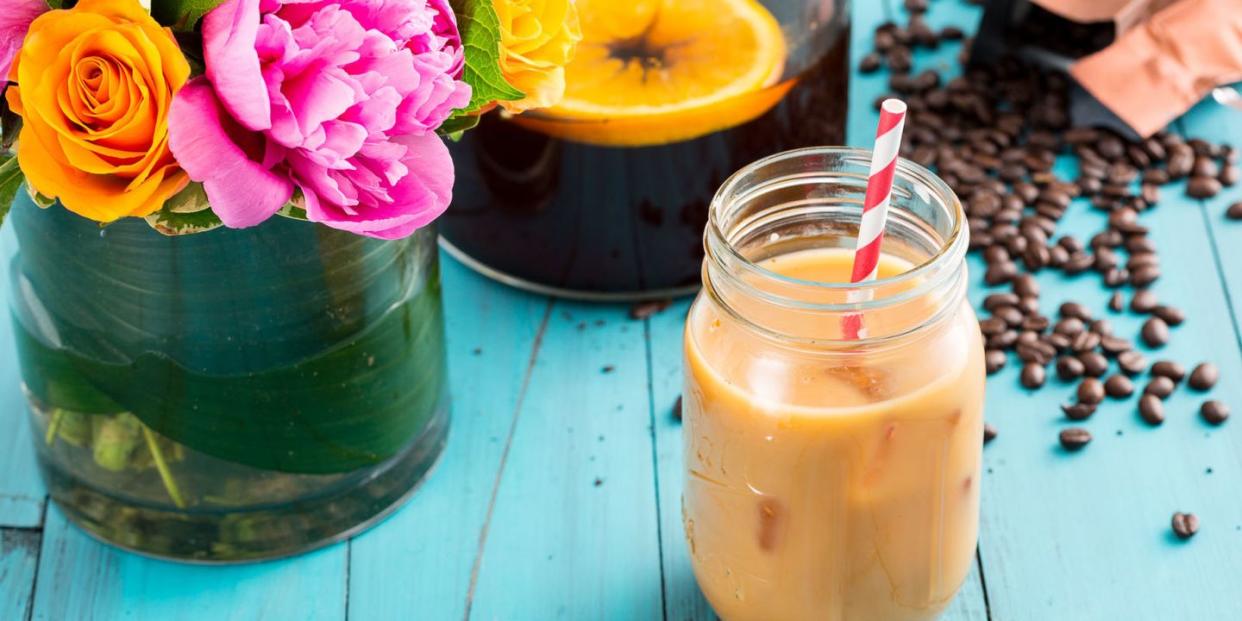
Iced coffee seems ridiculously simple to make at first: Don't you just brew a pot like you normally would and dump it over tons of ice? That's what the name suggests, but all it takes is one sip of that weak, watery java to make you realize something's not quite right.
We turned to Chad Moore, Starbucks' Global Coffee Engagement specialist, to learn what—exactly—we were doing wrong, and how we could get 'bucks-quality cold brew and iced coffee at home. Here's how to get both.
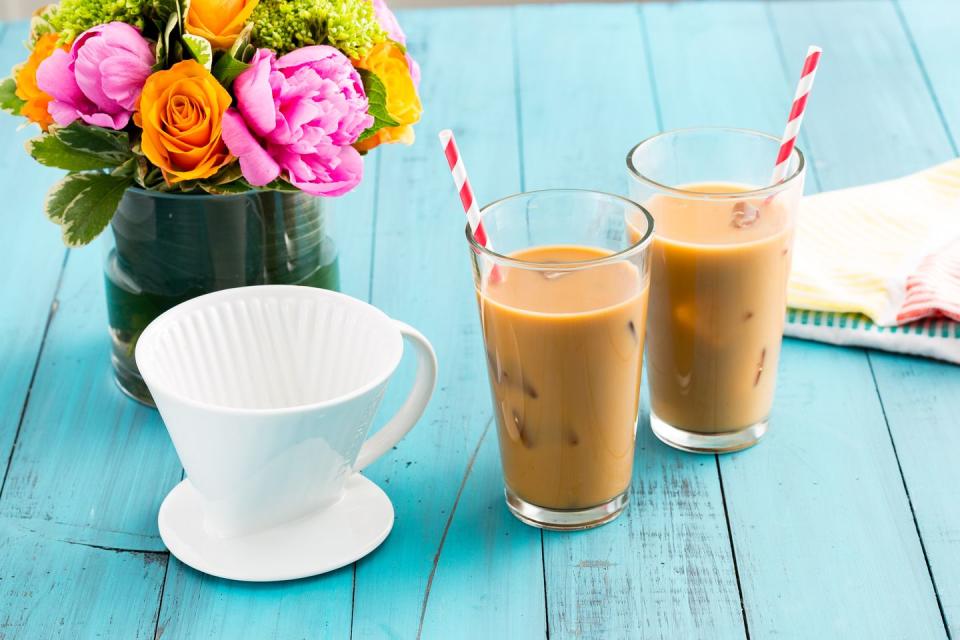
How to Make Killer Iced Coffee
Iced coffee is made almost the same way as you'd make hot coffee, but with one crucial twist: Use half as much water. "You want [the coffee] to be stronger because you're going to add ice, and that will melt," Moore explains. "That's what we mean when we say we brew it at 'double strength.'"
What You'll Need
Moore recommends using a pour-over cone, which basically looks like a ceramic funnel you stick on top of a mug or cup filled with ice. Place a coffee filter (or even a paper towel) on top, pour in the coffee grounds—which should be ground finely, about the consistency of sugar—and pour the water over the grounds. (If you're filling a 16-ounce cup, use 8 ounces of water.)
Starbucks suggests using 4 tablespoons of ground coffee for every 6 ounces of water you pour over it, according to this tutorial video.
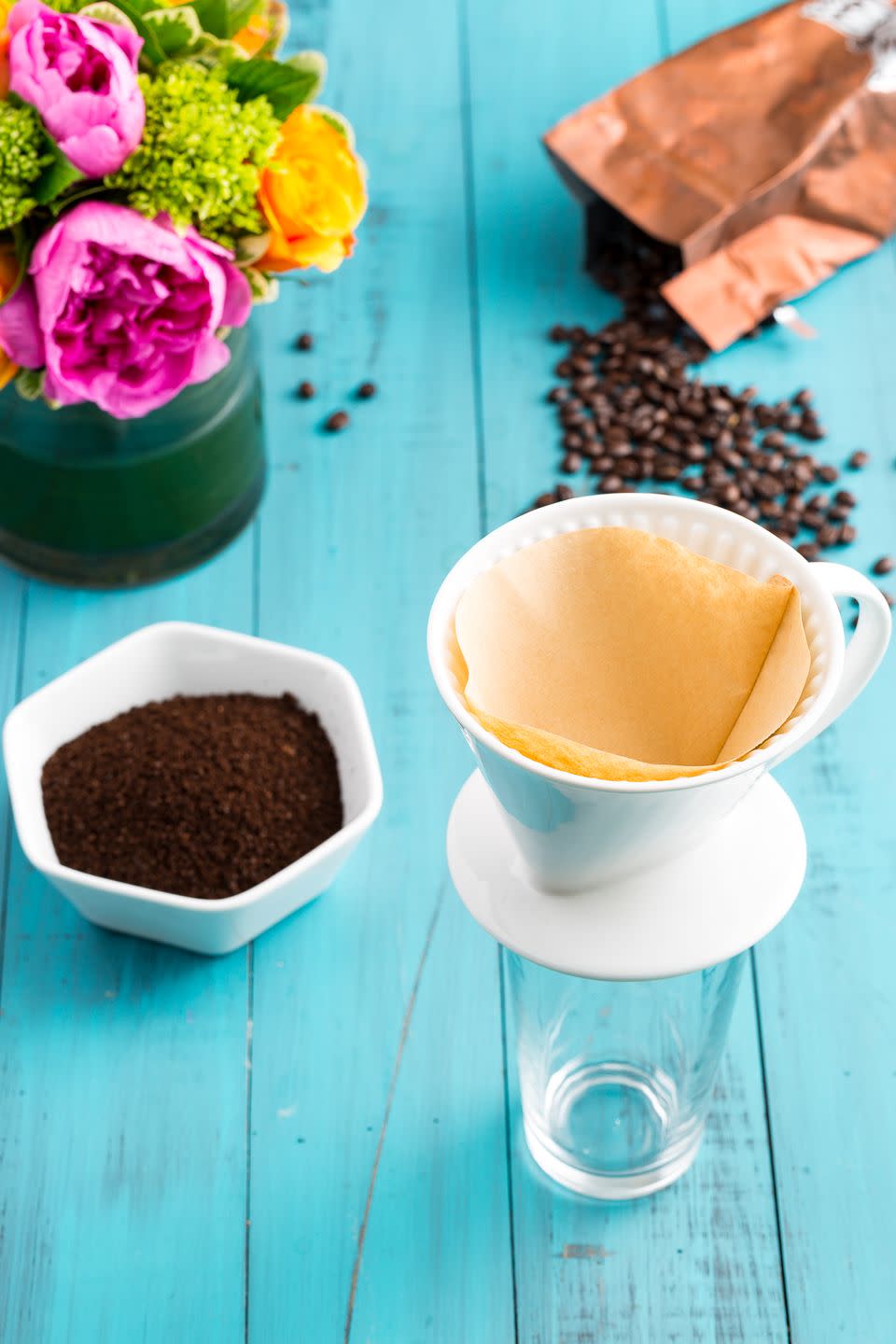
If you don't have a pour-over cup, you could also use a French press. In that case, you'd want coarser grounds that look like tiny rocks or pebbles, so they don't slip through the holes in the press and give you a gritty cup o' joe. Either way, you should still use half as much water, and make sure it's the highest-quality H2O around.
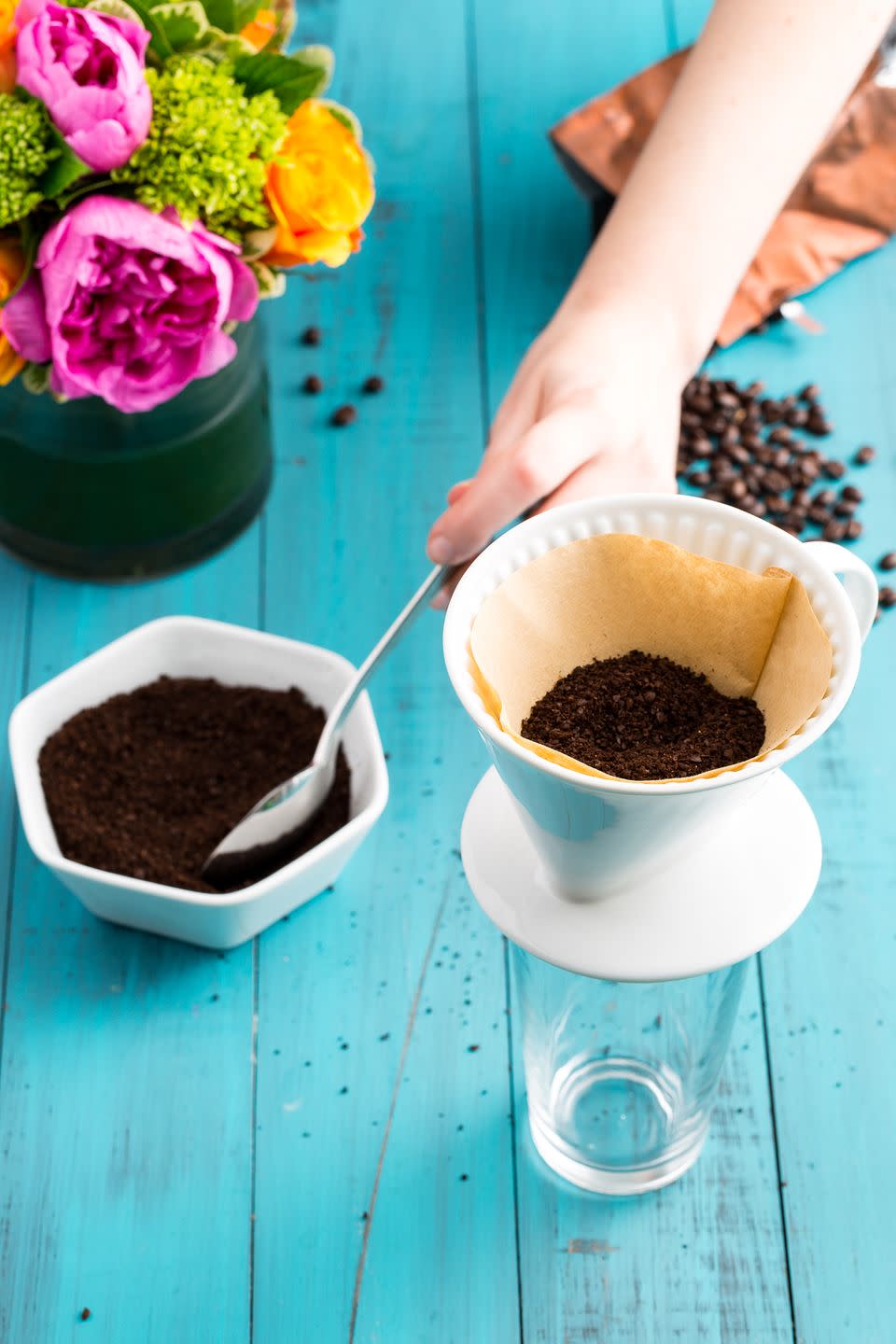
Channel Your Inner Water Boy
"The most important thing is to start with fresh, filtered water," Moore says. "Most people don't think of that, but coffee is 98 percent water, so it makes a huge difference in how the drink tastes."
The ice will melt a bit, but that's okay, since you've got double-strength coffee that needs to be diluted anyway.
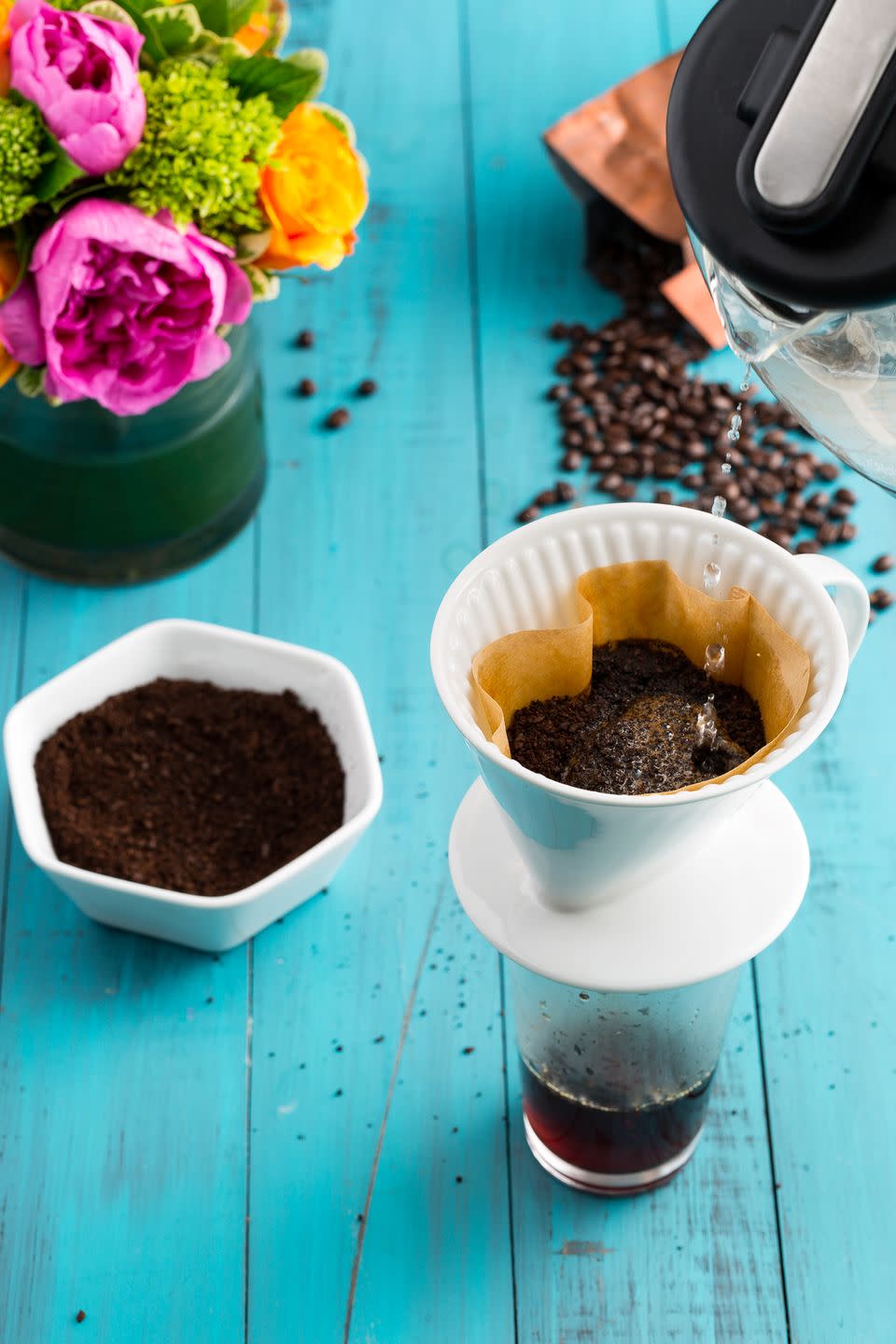
The Best Beans to Use
Latin-American and African coffees tend to be more crisp and refreshing, making them the best fit for iced coffee or cold brew, Moore says. "Latin coffees have a nuttiness and spiciness to them, while African coffees tend to be bright and acidic, so it all depends on your preference."
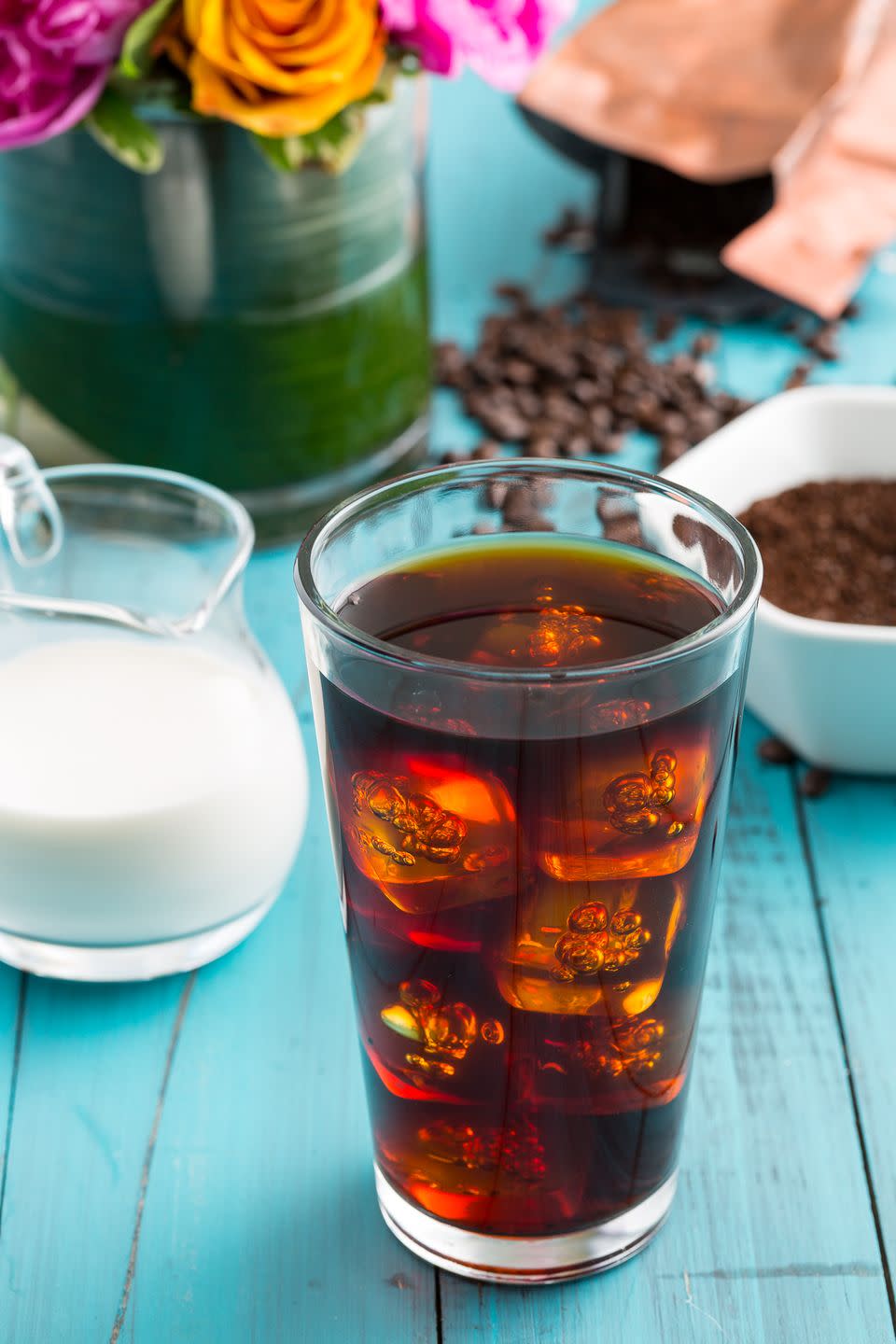
How to Make Crazy-Good Cold Brew
While iced coffee is ready almost immediately, cold brew is more of a commitment: It has to be steeped for 14 to 24 hours before it's ready to pour. If you don't like bitter or acidic coffee—AKA that tingling sensation on your tongue, which you can also get from drinking OJ—it's well worth the effort, though, since that overnight chill helps mellow out the java.
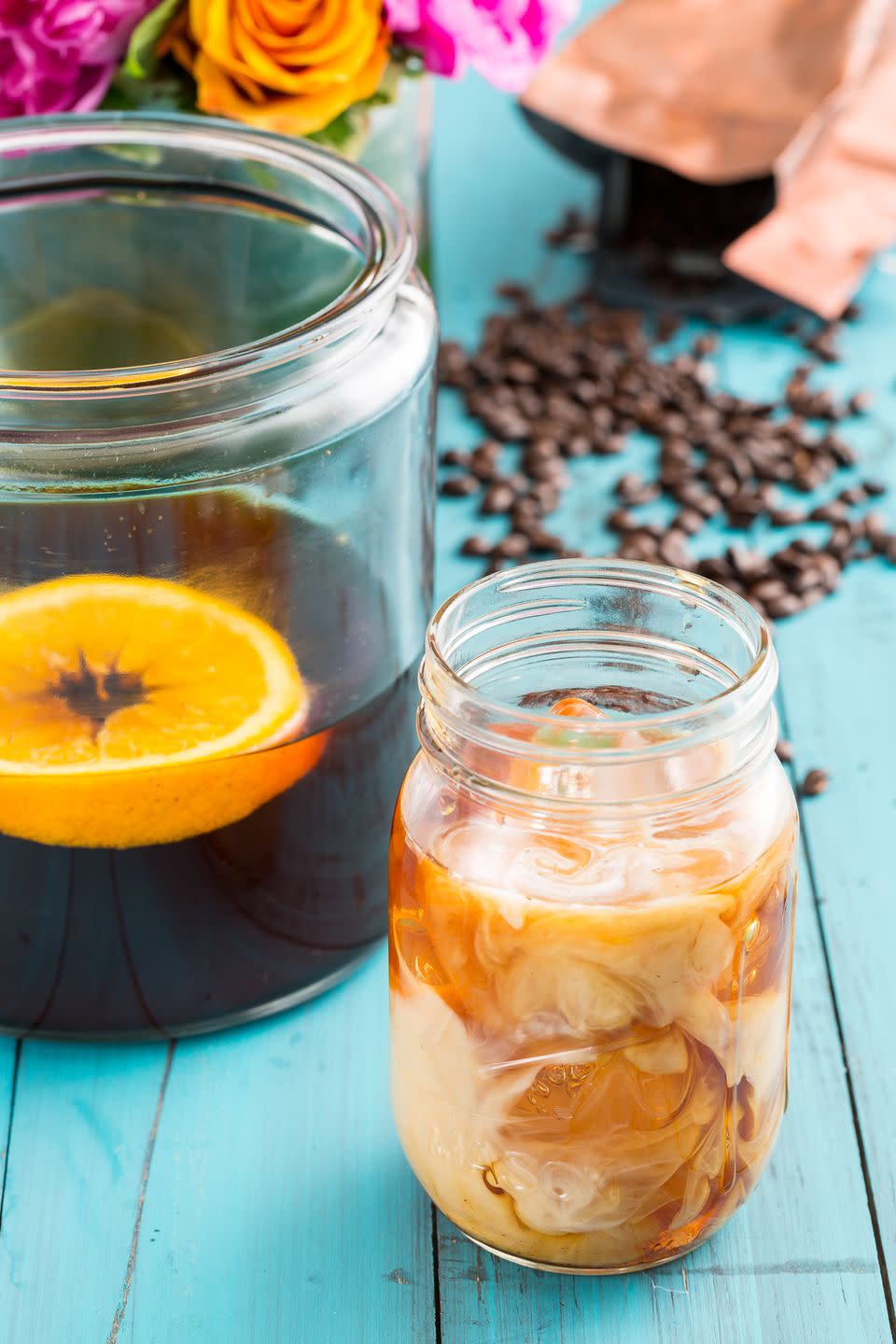
What You'll Need
This method's awesome because you don't have to have any fancy coffee equipment or barista skills to master it. You just need two giant jugs or pitcher to store the brew in and transfer it, and a strainer to separate the grounds when the glorious time comes to drink it. "You could even use a big bowl and a cheesecloth," Moore says.
We used two large jars and a strainer.
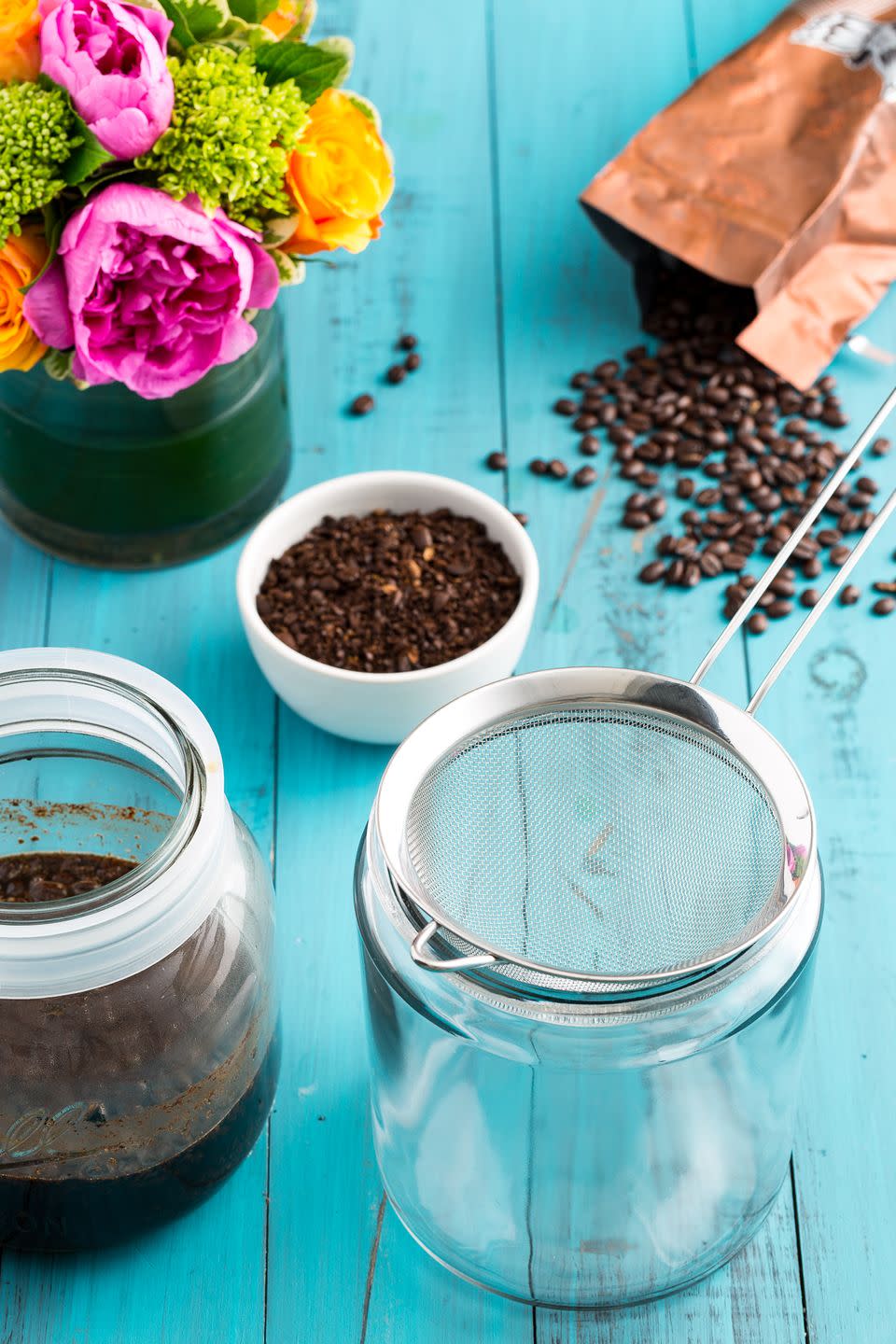
Get Grounded
Filtered water is also critical to use here, since it will affect the flavor, and in this case, you want to use coarse-ground coffee (think pebbles or small rocks), since the water will be leaching flavor from the grounds for hours and hours. "If the grounds are too fine, you can over-extract the beans," Moore says, leading to a pitcher of disappointment.
What to Do
It doesn't get simpler than this: Pour the coarse grounds into the large bowl/pitcher/jar/fishbowl, following a 1:1 ratio of grounds to water. "If you were going to brew a pound of coffee, use a gallon of water," Moore says.
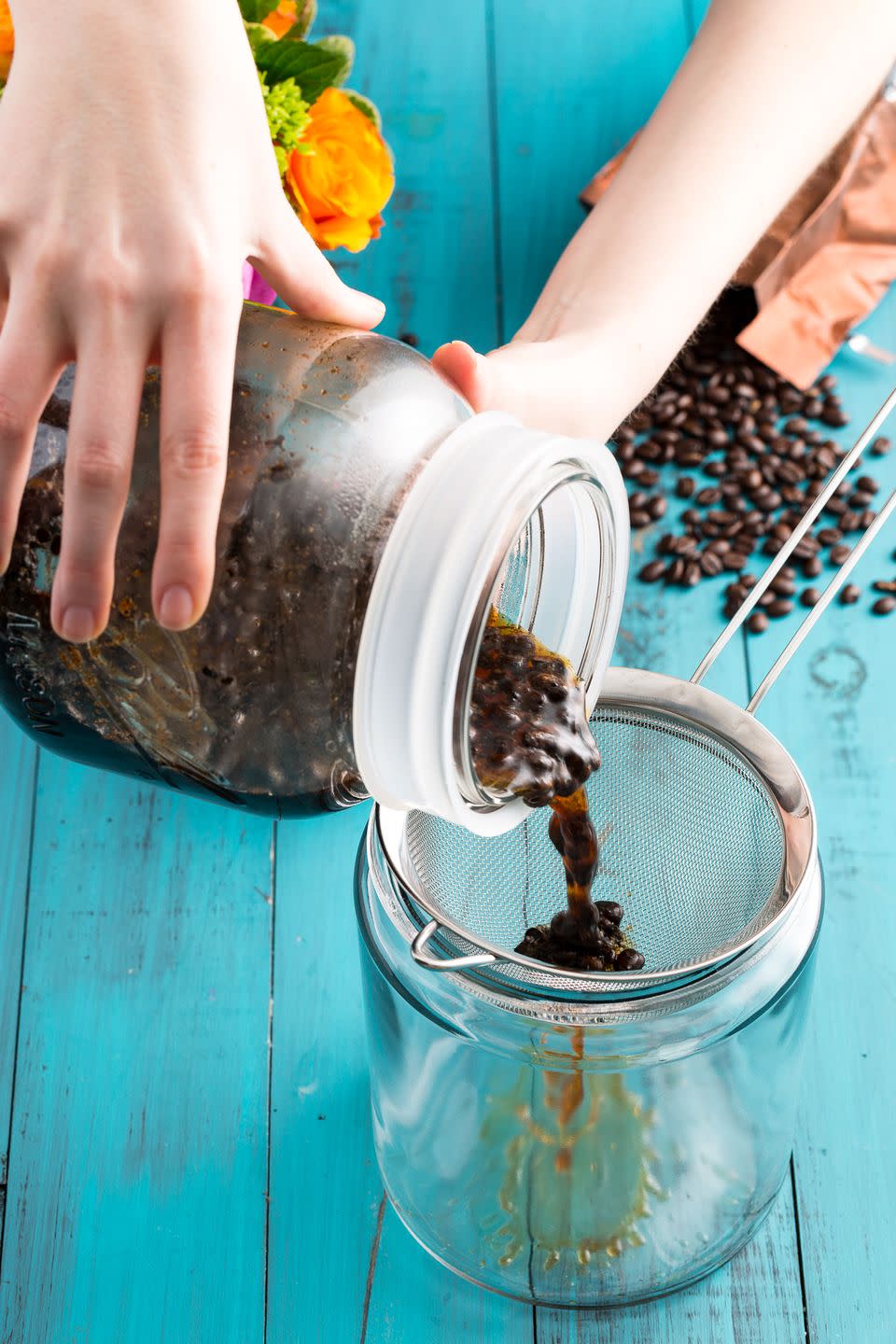
Leave it in the fridge for 14 hours or more—Starbucks' sweet spot is 20 hours, FYI—then pour the mixture through a strainer or cheesecloth (or even a funnel lined with a coffee filter) into another large pitcher, so it's ready to serve.
"The finished product is a concentrate, so you'll want to double the amount by adding water to it at the end," Moore says. So, in that case, if you're making a glass, fill it with ice, then pour in the cold brew, filling it just halfway up, then top it off with water so it doesn't taste like java-infused gasoline.
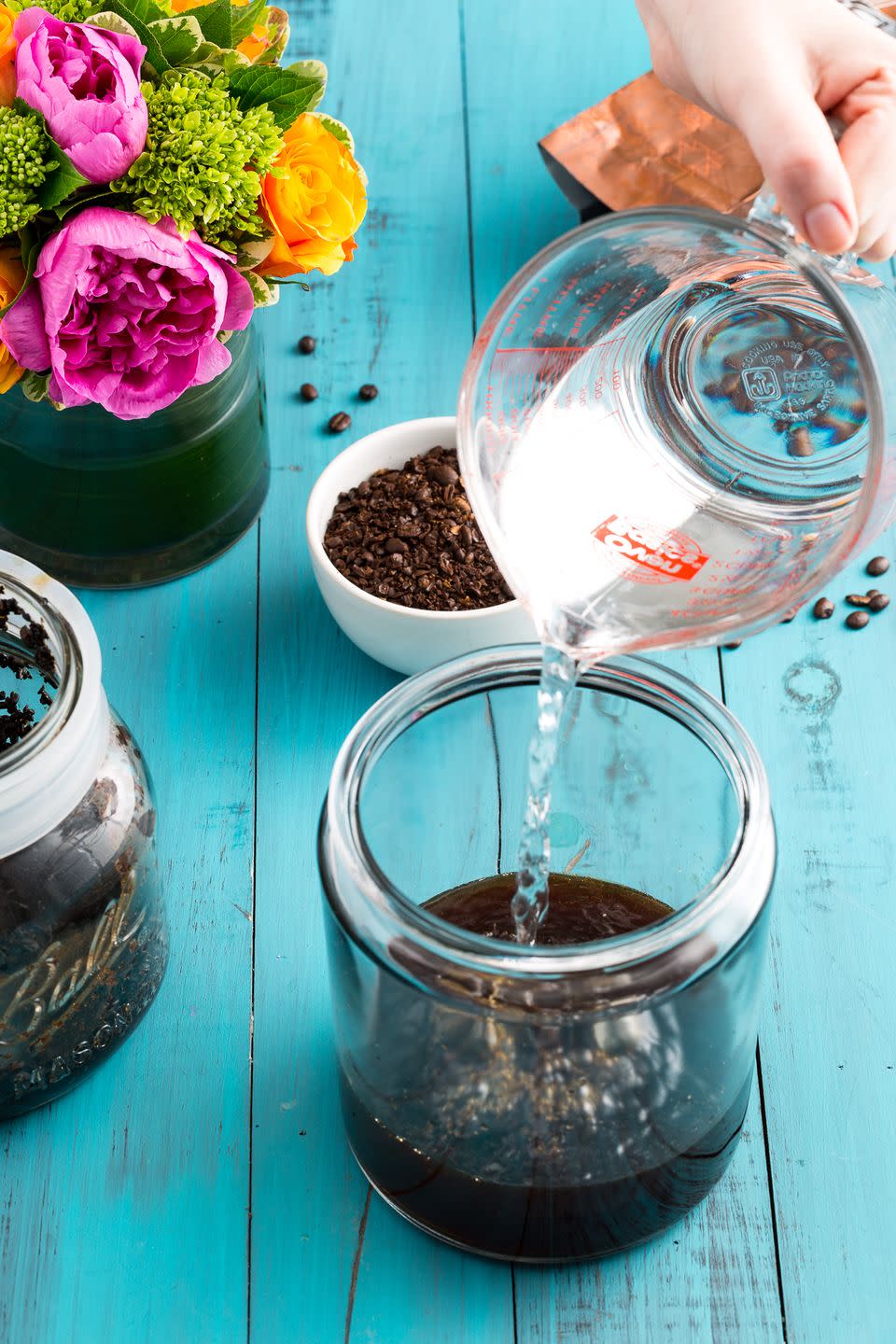
Take It to the Next Level
Once you've mastered both styles, Moore has a challenge for you: Try adding a few slices of orange or grapefruit to your brew, leaving it in the fridge for 30 minutes or up to four hours.
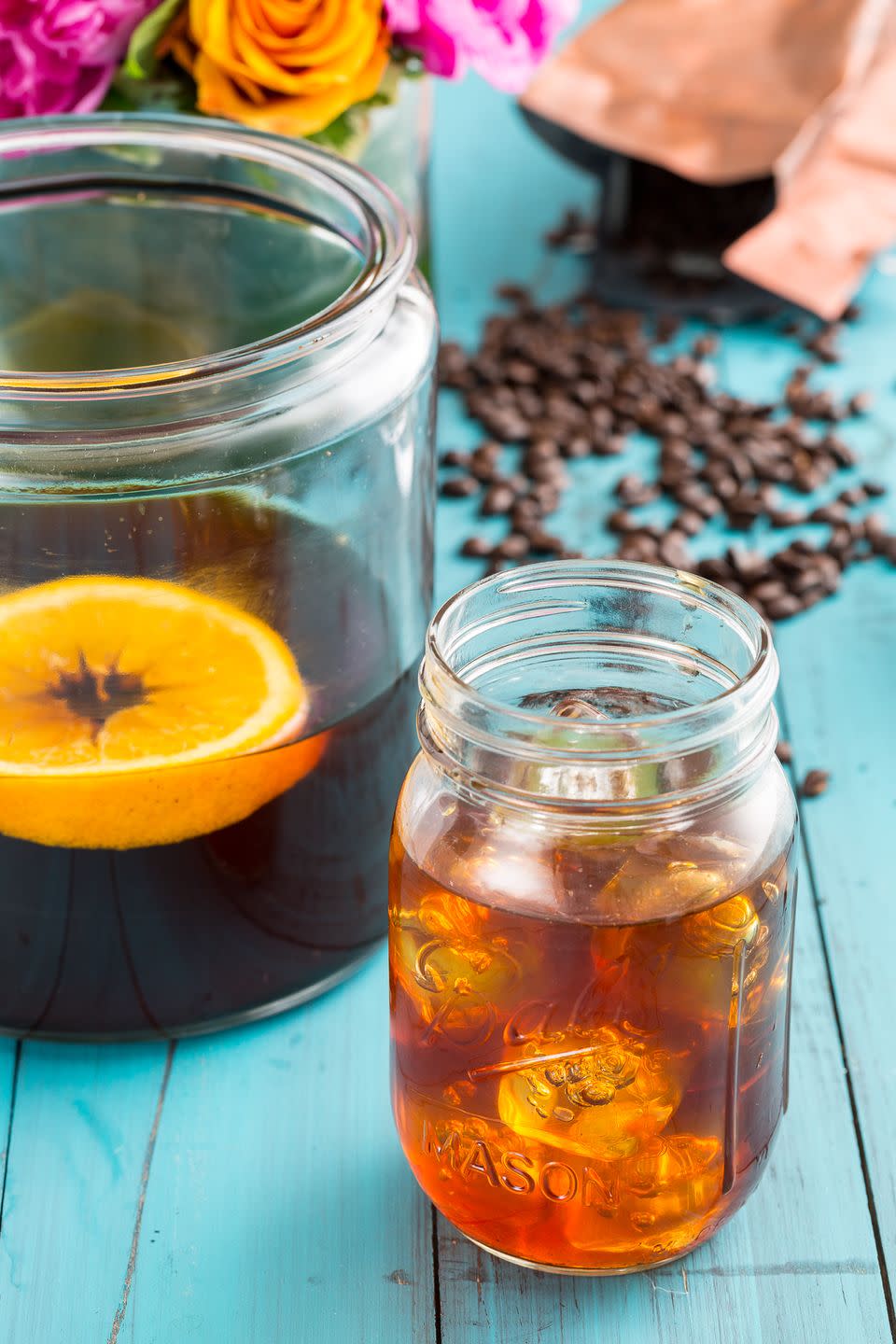
It plays up the citrusy notes in African coffees, making them taste even more crisp and refreshing—and Moore swears it won't give your drink an orange-y tang (as long as you don't leave the fruit in for more than a couple hours, that is).
Now that you know how it's done, pin this image so you can come back any time and get yo' drink on:
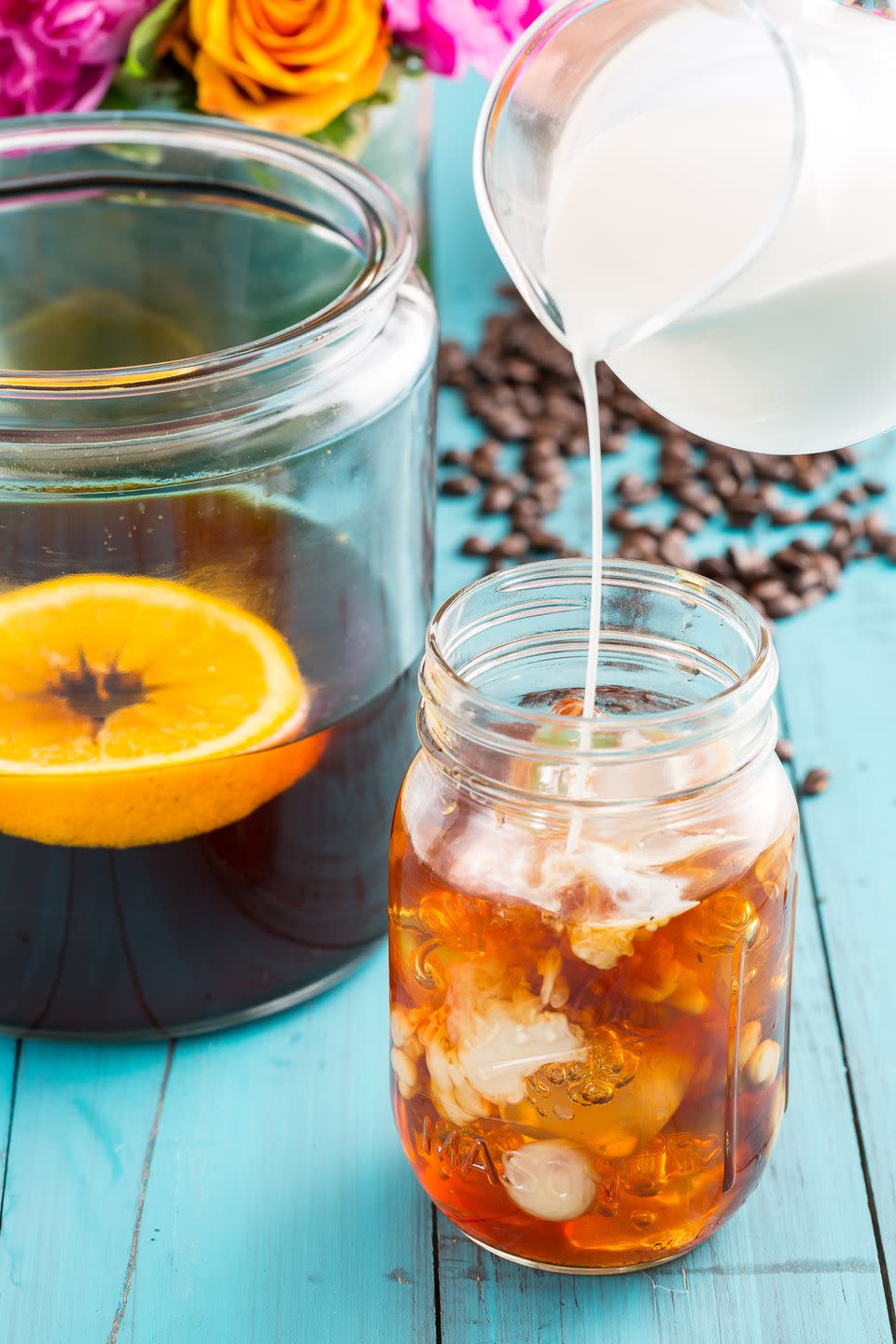
Follow Delish on Instagram.
You Might Also Like

